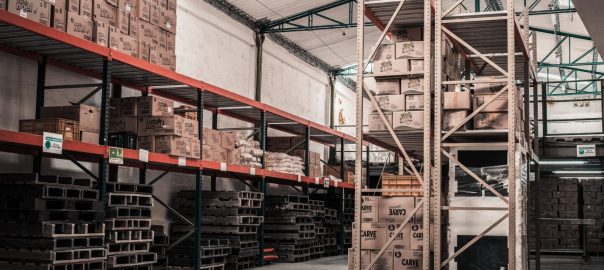
Do you have a company that sells products online? Then, one of the most critical factors you need to succeed is an efficient order fulfillment process that gets products to customers quickly and undamaged. If you sell through a physical store, having the right order fulfillment process still matters as more and more customers choose to pick up in your store or curbside during the pandemic. But, if you are into e-commerce, which is actually booming in an increasingly digital world, you need excellent shipping fulfillment services to ensure business success.
Crafting the right order fulfillment process
The process
Order fulfillment is the methodology of accepting, packing, and shipping an item to a customer or, in the case of pickup, arranging for a place where customers can quickly get their item or have it brought to their car. For instance, following Amazon’s lead, several retailers offer lockers where they store ordered items until the customer unlocks the locker using a code sent in their order pickup notice.
A successful order fulfillment process varies, depending on the situation of each business and the needs and preferences of their customers. Some companies do the work on their own (in-house), while others use a 3PL or third-party logistics provider.
Here is the typical sequence involved in the order fulfillment process:
Goods acceptance ? Storage ? Order request from customer ? Processing ? Picking and packing ? Shipment ? Returns (if any)
- Acceptance: In-house fulfillment companies receive the products from manufacturers or upstream wholesalers. Some businesses choose to use the services of 3PL providers to do this task.
- Storage: Establishing an organized and well-labeled storage warehouse is crucial to a hassle-free, low-cost order fulfillment process, as stocking extra inventory because you can’t accurately assess how many items are currently stored involves wasted space and time spent finding needed items. A messy warehouse frequently causes confusion, which may lead to inaccurate order fulfillment and unnecessary delays.
- Order request from customer and processing: Once you receive an order from a customer, you begin the necessary steps to ensure that it reaches the customer in a timely manner. This step typically begins with acknowledging the request in your system or encoding it in your database. Online orders speed this process and ensure against mistakes.
- Picking and packing: Once the item is encoded for processing, the worker (or robot) pulls the item from its storage location and packs it for shipping. An automated process checks packed orders using weight to help ensure all items were picked and no extra items added to the container. The packed products are then classified into specific geographic areas and proper carriers to prepare them for shipment.
- Shipment and delivery: The packed product is now transported to the customer through various delivery methods, including air, boat, train, or road transit depending on the product value and perishability, as well as customer needs.
- Returns: No fulfillment ends with product delivery. Some customers may choose to send the product back for any of a number of reasons. Reverse logistics is the term assigned to getting these products back to your warehouse and, in some cases, ensuring the item is replaced. The cost of reverse logistics is so high that some firms now ask you to keep or donate low-cost items rather than return them. Another option is to return the item to a physical store. For instance, stores such as Kohl’s now accept Amazon returns and combine them for cost-effective returns.
The strategies
The precise and on-time fulfillment of ordered products is critical if you want to grow your business. Additionally, it is a best practice to develop sound strategies to improve your order fulfillment process on a continual basis as technologies and other factors change rapidly.
Formulate your techniques
As mentioned earlier, businesses face different situations that may either boost their fulfillment strategy or increase fulfillment difficulties. Nevertheless, here are essential factors that you should consider to make sound and better fulfillment strategies.
- Business size and order volume
Before formulating your strategy, you must understand your business size and capacity well. It is also best to have accurate information on your monthly order volume to develop a strategy based on the items you sell within a specific timeframe.
- Geography
Location is also a crucial factor when finding ways to provide the best shipment fulfillment services. A company with an international reach might experience more problems than a business serving a less extensive geographic region and make strikingly different decisions. For instance, international shipments often involve large distances and point to different carrier decisions to ensure efficiency and cost-effectiveness. Retailers in rural areas may also have difficulty shipping their products to urban cities.
If you understand how to ship your products to your customers strategically, you might find ways to cut the need for more expensive methods like using air freight, which is the most expensive delivery option in most cases.
- Sales and Technology
Once your items start moving off the rack and into your customers’ hands, it means you are on the right path. Moreover, if you aim to prioritize your e-commerce strategies, you should include technology in your plans. Seamless integration of your products into e-commerce platforms and online marketplaces is a good starting point.
You understand know how to develop your sales through good marketing and the right channels. Look for the right tools that fit your business goals, budget, workforce capacity, and meet customer expectations, such as free shipping. There are also online systems that can monitor and analyze your supply and demand data, which is a significant factor in forming the right strategies.
Now you know the factors you must know to formulate your order fulfillment strategies. Let’s next check the five best practices that can help you boost these strategies.
5 best practices in the order fulfillment process
Photo by Tiger Lily from Pexels
Running a hassle-free order fulfillment process is vital to maintaining customer satisfaction and boosting your business growth. If your supply chain management is evolving or you’re considering a change, try out these five practices to get your business running like a well-oiled machine.
Close inventory monitoring
Did you ever want to order an item from an online marketplace, but found the item was out of stock? It doesn’t help you form a positive attitude toward the company. In fact, if you find an item is out of stock, online shopping means it’s incredibly easy to buy from a different vendor.
This type of failure, if you own the company, results in your customer satisfaction going down a notch every time your customers experience the same scenario. That’s the reason why close inventory monitoring is a vital practice in the order fulfillment process.
Accurate inventory monitoring is a significant factor in determining your business health. Real-time management also boosts your warehouse’s organization, which helps you maintain optimal supply on-hand.
Look at it this way. The ability to properly monitor your inventory levels lets you make significant decisions regarding when to restock materials or products, the number of workers you need, plus the budget you need to assign to your inventory management.
Logistics, which involves inventory management, offers a number of algorithms to help maintain optimal inventory levels.
#2 Plan for slotting optimization
Slotting refers to handling the picking and packing process in your warehouse and distribution facilities. It identifies where you should strategically place items to help your pickers select the ordered items fast. For instance, e-commerce giants have this down to a science. Workers fulfill a number of orders simultaneously. Thus, a single pass through the warehouse allows a worker to fulfill a large number of orders, which reduces their steps and the time required. Developing the right sliding plan is difficult, yet it’s one of the most useful tasks in the order fulfillment process.
A popular technique involved in slotting is to place in-demand items close to each other in the front or back of your warehouse. This practice lessens the packing time of such products and increases the efficiency of your workforce. Another consideration in slotting optimization is to place your items in the warehouse based on their size, fragility, and weight. As a general rule, your pickers should pick the most fragile products last to prevent crushing by heavy objects.
# 3 Build a good relationship with suppliers
Not all online sellers manufacture the items they sell. Many rely on at least one company to fulfill customer orders and that’s where problems arise. One of the main risks involved in your supply chain is that you might not always have assurance as to when your supplies shipment arrives or knowledge of delays.
Delays and even cancellations may happen for a variety of reasons including weather, carrier breakdowns, and repurposing your order to meet the demands of a more consequential vendor. If you can’t fulfill orders due to these supply chain issues, your customers aren’t happy and may share their dissatisfaction with others to lower your reputation.
Good relationships with suppliers provide leverage in meeting customer needs by ensuring adequate supply through sharing information between you and various suppliers. Open communication between relational partners means you get prompt knowledge of factors that might result in a delay, as well as priority for delivery once supply becomes available. Communication also speeds your orders to reduce the time needed for replenishment.
An excellent solution is to build good relationships and integrate systems with your suppliers, such as EDI (electronic data interchange) and ECR (efficient consumer response). Have these software tools helps you share timely and complete information. It also allows you to track the progress of your product shipments, so you can anticipate problems and find solutions before disappointing customers.
#4 Incorporate a smart system
Limit time-consuming manual activities through smart, innovative systems. Intelligent warehouse systems use various interrelated innovations to improve monitoring and operational efficiency while decreasing human workload. Through such practice, you and your team can focus on higher-level activities instead of spending most of your time finding an item for shipping.
Today’s automated systems offer new technological components that allow you to track and manage various order fulfillment processes. If we focus on automated warehouse systems, most advancements now include RFID (radio-frequency identification), AI (artificial intelligence), imaging and recognition, and robotics.
How do these innovations help the fulfillment process?
RFID: RFID scanners identify the code of each product. Once scanned, you can automatically update the inventory system for supply monitoring and find desired products using an audible tone and/or a visual cue.
AI: AI helps by recognizing items based on imagery and codes. It can also help monitor the activity within the warehouse and other facilities.
Robotics: Once codes are placed in a robot’s system robots help store items on their proper storage racks. They can also help in picking items to bring to the packing area.
#5 Boost supply chain visibility
Boost the visibility of your supply chain data. Assess, analyze, and design solutions that address your supply chain management concerns. This practice entails monitoring the production process, orders, and delivery to provide significant awareness of your entire operation.
When you enhance your operational visibility, you can also mitigate risks before they even happen during your order fulfillment process as part of and in addition to adequate monitoring. Look at it this way. If you have consistently late staff, which tends to lower the production rate at your facility, having this data provides insights and offers opportunities to improve your process and avoid customer complaints.
Conclusion
It is obvious that accurate supply chain visibility improves your supply chain processes. But to have a better operational outcome, try to practice these five steps. You will see that in no time, you are starting to save money while gaining customer satisfaction.
Maintaining proper order fulfillment management requires you to have a good grasp of the process, formulate effective strategies, and observe your processes’ good practice. Always consider the needs of your business to develop and grow.
Business & Finance Articles on Business 2 Community
(63)
Report Post






